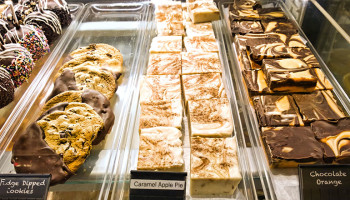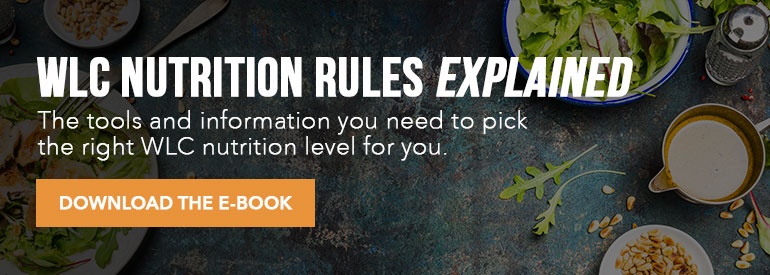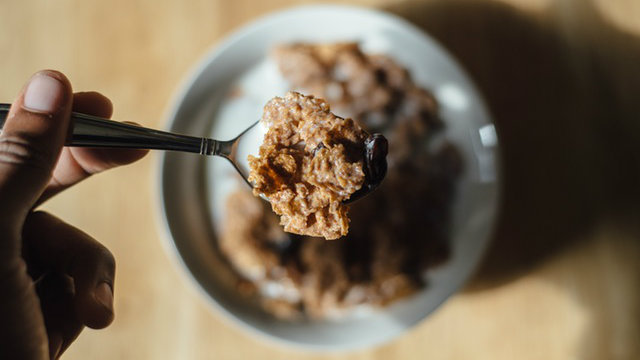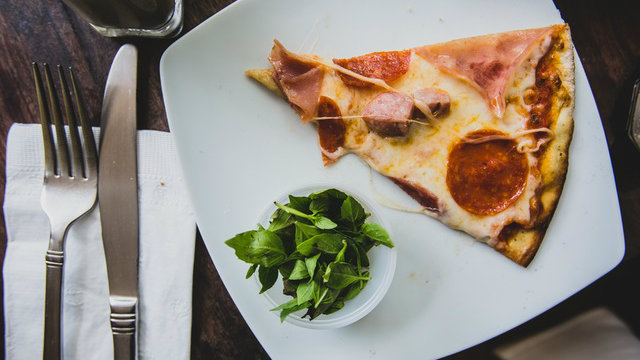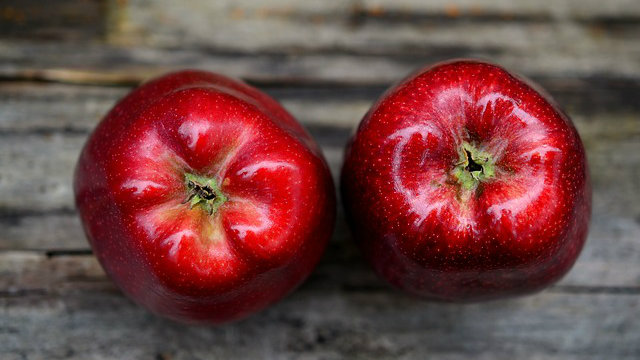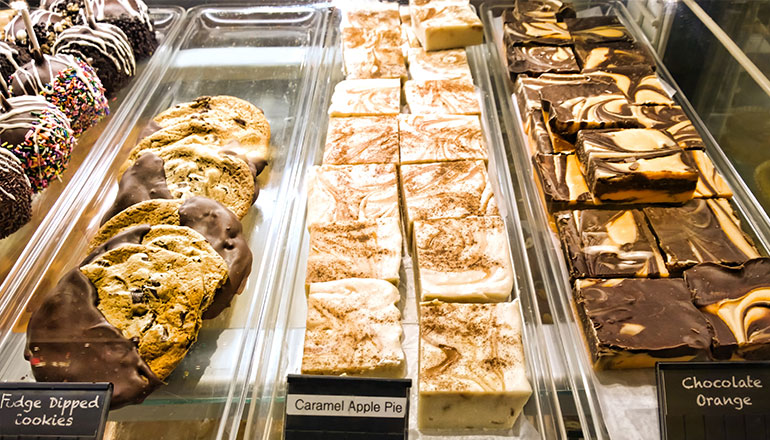 Reading Time: 7 minutes
Reading Time: 7 minutesThe other night, my brother and his wife were in town from Seattle and I met them for dinner in New York City. By the time I arrived, they had already ordered an appetizer: an artisan pizza with prosciutto and massive basil leaves. They were nearly moaning after their first bite.
“You have to try this,” said my sister-in-law.
“It looks amazing,” I said. “But I don’t really do pizza these days.”
That response came out easily and I barely remember the time when a response like that may have felt forced or foreign. I watched my brother and his wife delight in the pizza and I truly did not feel as if I were missing out. And that alone astounds me.
It Wasn’t About the Mechanics, It Was About My Emotions
My relationship with food and eating has completely changed over the two years I’ve been doing the Whole Life Challenge. In the beginning, it was hard. I gave things up that I loved and sometimes my body and mood rebelled like crazy. Early on, I was so crave-y and cranky that my husband begged me to just eat a cookie so we could all go back to the kinder, gentler me.
Over that first go-around, I paid conscientious attention to what I call the “mechanics” of the Challenge. I followed the food guidelines to the letter and did the best I could with everything else. I saw an immediate change in my mood and energy as soon as the sugar detox was complete, and I was humbled at how addicted I’d been without ever realizing it.
I’d considered myself to be a healthy but emotional eater, and the extra fifteen pounds I was carrying around was a testament to the latter. After I’d gotten all the mechanics down — how to get enough water, how to get enough sleep, how to fit in daily stretching — and they’d become second nature to me, I was able to start working on my relationship with food — an admittedly epic and complicated saga.
How I Came to Understand My Truths About Food
I’m over fifty years old and have struggled with weight my entire life. I’ve tried every diet, lost weight, and gained it back. I’m sure the fifteen pounds I’ve dropped on the Whole Life Challenge has a lot to do with the mechanics of how I now eat, but the structure of the Challenge has also allowed me to understand some of my own “Food Truths” in a new way.
When I say Food Truths, I’m sure you know what I mean. Not just “issues,” but beliefs and habits. The stuff that goes on without us really noticing. Until we do.
The better acquainted I’ve become with my Food Truths, the easier it’s been to make decisions on behalf of my own well-being. I don’t even think I’ve changed any of my Food Truths. I’ve just taken a good look at them and stopped trying to pretend they didn’t exist. These were my top two:
1. I’m a Better Abstainer, Than Moderator
In her wonderful blog, The Happiness Project, Gretchen Rubin spells out the difference between Moderators and Abstainers. Moderators are people who can have a little bit of cake and feel “done.” Abstainers are more all-or-nothing types. I’m better off having No Cake Ever, than having A Little Cake Occasionally. A little simply does not work for me; it makes me want more.
For Abstainers, just saying no is a hundred times easier than having to decide “how much” on a case-by-case basis. I could have easily used an indulgence token for that pizza with my brother, but I knew it would not go well for me in the long-term. Eating guidelines that rely on portion control are my downfall (on Weight Watchers, I used to run out of points by 2:00pm). One slice of pizza will trigger my pizza cravings indefinitely. I don’t like it, but that’s my truth.
2. When I Eat, It Often Has Nothing to Do With Hunger
Like most people, I eat for lots of different reasons, many of them habitual rather than conscious. Once I began to notice why I was eating — even if I didn’t do anything different — those unconscious habits became something I felt like I had more control over. I estimate that twenty percent of my food intake is a direct result of hunger. The rest is a result of many other things:
- Needing Comfort: Whether I’m seeking relief from general anxiety or from a tough day, food has always been my go-to soother. During my second challenge, I began to ask myself, “Why does your life require so much soothing, and is there anything you can do about that?” Sometimes the answer was no. But other times, I learned if I merely said “no” to things I didn’t want to do in the first place, I was far less compelled to numb myself with food. Plus, when I started to notice that all I was looking for was comfort, a cup of chai tea started to soothe me nearly as effectively as a chocolate chip cookie once had.
- Boredom or Procrastination: If I have to work on something tedious or difficult, all of a sudden I’m “starving” and can’t possibly do another thing before eating. Knowing this is my M.O., I now might delay eating lunch on days I have a difficult assignment. I’ll still use food to avoid work, but I no longer eat a whole second meal in the process. I’ve also diversified, procrastinating by running errands or playing online Scrabble rather than mindless snacking.
- Celebration or Opportunity: Before the Challenge, if I was at a party or out to dinner, I considered it my civic duty to taste every single thing that was available. Now, social events are about the people, not the food. If I’m out with friends and I start eating things I know are going to make me feel awful, it’s usually because I’m anxious or tired. Just knowing this makes healthy food choices easier.
- Cravings: Those unrelenting, unwelcome bugaboos of virtuous eating. I recently read somewhere that when we crave a particular food, we are actually craving something deeper. That may or may not feel true for you, but I have found that when I crave chocolate, my body is usually satisfied with fat. Meaning, a small handful of almonds can calm most of my cravings. And if one handful doesn’t, I have another. In fact, the more healthy fat I have in my diet, the less I crave anything.
- Transition: This was my biggest a-ha! discovery. I would walk into my house, having just come from a restaurant dinner, and the first thing I’d do was make myself a snack. What?! I wasn’t hungry — in fact, I was often stuffed. But I needed transition time — a little respite that said, “I used to be out in the world and now I’m at home.” Years ago, when I was a cigarette smoker, lighting up would be my transition time. Having a cigarette would signify the end of one thing and the beginning of something new. I don’t have a new Transition Activity, and sometimes I still reach for food when I arrive home, but I now transition with an apple or carrot sticks, rather than the bag of tortilla chips. And since I’m not hungry, they serve the exact same purpose.
The Real Change Has Nothing to Do With Food
The power of this challenge does not lie in someone’s ability to cut pizza out of her diet. The power lies in paying attention to who we are and why we eat the way we do. When people on my team share things they’ve learned about their inner workings — even if they don’t call them Food Truths (and nobody does!) — I’m far more excited for them than if they just slogged through another day compliantly.
For me, gaining insight is more valuable than gaining points. I won’t remember my Whole Life Challenge score six months from now, but embracing my Food Truths has changed my mood, energy, health, and confidence. Certainly, for now. With any luck, for life.
